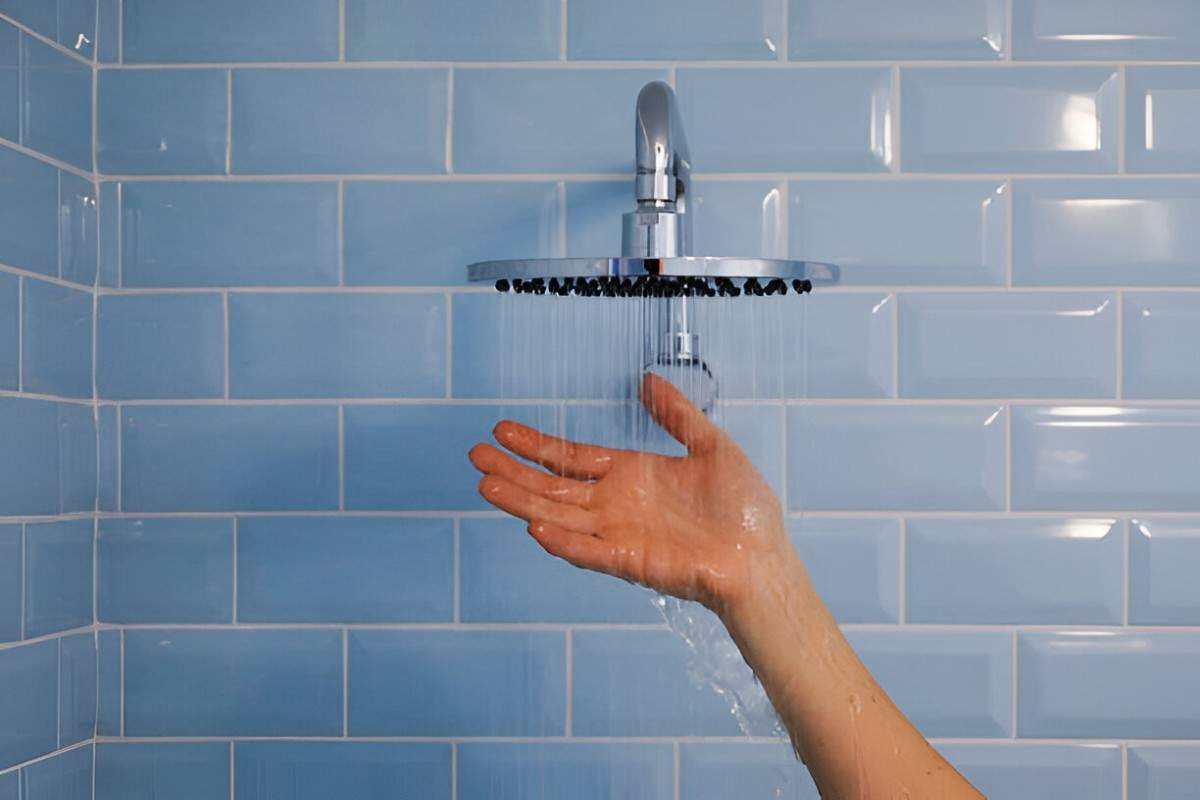When it comes to choosing the right shower head for your bathroom, it can feel like there are an overwhelming number of options. Each shower head claims to provide a unique experience, but how do you know which one is truly right for you? After all, the shower head plays a crucial role in your daily routine, influencing both the quality of your shower and your water usage. I’ve spent a fair amount of time researching, testing, and considering all the factors that contribute to selecting the best shower head. In this guide, I will walk you through the different types of shower heads, key factors to consider, and how to make the decision based on your preferences and needs.
Table of Contents
1. Why the Right Shower Head Matters
The shower head is not just about spraying water; it’s about creating a space where you can relax, feel rejuvenated, and even save water. I’ve found that choosing a shower head can significantly impact water pressure, efficiency, and the overall showering experience. A great shower head can make a big difference, whether you’re trying to relax after a long day or conserve water without sacrificing comfort.
2. Understanding the Types of Shower Heads
Shower heads come in a variety of styles, each offering distinct benefits. I’ll start by outlining the most common types of shower heads available and what makes each of them unique.
Fixed Shower Head
This is the most traditional type of shower head, mounted on the wall or ceiling. It remains stationary and usually allows you to adjust the water pressure and temperature. I’ve used these in many homes and find them to be simple, reliable, and easy to install.
Advantages:
- Simple installation
- Suitable for most bathrooms
- Often comes with adjustable spray patterns
Disadvantages:
- Can be challenging to adjust for people of different heights
- Fixed position may limit flexibility during the shower
Handheld Shower Head
As the name suggests, a handheld shower head is attached to a flexible hose, allowing you to remove it from its mount and use it as you please. This type is perfect for rinsing off in the shower or cleaning the tub.
Advantages:
- Highly versatile and portable
- Great for cleaning pets or kids
- Convenient for targeting specific areas of the body
Disadvantages:
- Requires more space for installation
- Hose can become tangled if not managed properly
Rain Shower Head
Rain shower heads are designed to mimic the experience of standing under a rain shower. They typically feature a larger, wider head, providing an even coverage of water. These can be mounted on the wall or the ceiling.
Advantages:
- Provides a luxurious, spa-like experience
- Even water coverage
- Ideal for relaxation
Disadvantages:
- Higher water consumption
- May not work well with low water pressure
High-Pressure Shower Head
If you live in a place with low water pressure, a high-pressure shower head might be a good choice. These shower heads are designed to deliver a strong stream of water, making showers feel more invigorating.
Advantages:
- Enhances low water pressure
- Ideal for people who prefer a strong, stimulating shower
Disadvantages:
- Can use more water
- May not be ideal for sensitive skin
Eco-Friendly Shower Head
For those looking to conserve water, eco-friendly shower heads are a great choice. They are designed to reduce water flow without compromising the shower experience. These shower heads are perfect if you want to reduce your environmental footprint.
Advantages:
- Water conservation
- Lower water bills
- Often features water-saving technology
Disadvantages:
- Some models may feel less powerful
- Can be expensive upfront
3. Key Factors to Consider When Choosing a Shower Head
When selecting the best shower head, there are a number of factors to consider. I’ll go through these factors in detail so you can make an informed decision.
Water Pressure
Water pressure is one of the most important factors when choosing a shower head. A weak shower can be frustrating, while too much pressure can be uncomfortable. I recommend considering the pressure in your area and choosing a shower head that accommodates it. For low water pressure, a high-pressure or aerated shower head may be the best option.
Spray Patterns
Different shower heads offer different spray patterns. Some common spray patterns include:
- Rain: A gentle, even flow of water.
- Massage: Pulsating water streams that can help with muscle relaxation.
- Jet/Power Spray: A concentrated, powerful spray for rinsing.
Choose a shower head with a spray pattern that suits your needs. I personally enjoy the rain pattern for a relaxing experience but opt for the massage setting after a long workout.
Material and Durability
Shower heads come in various materials such as chrome, stainless steel, and plastic. I always recommend opting for materials that are durable and resistant to corrosion. Stainless steel or brass shower heads, while more expensive, tend to last much longer than plastic ones.
Installation
Most shower heads are easy to install, but there are still some things to consider. Fixed shower heads generally require more professional installation, especially if you’re opting for ceiling-mounted models. Handheld shower heads, on the other hand, are easy to install and can be added without much hassle. If you’re not a fan of complicated installations, a handheld or wall-mounted model might be the best choice.
Budget
Shower heads come in a range of prices, from budget options to high-end models. When considering your budget, it’s important to balance price with the features you need. I’ve found that while it’s tempting to go for the cheapest option, investing in a slightly more expensive model can pay off in terms of durability and features.
Water Flow Rate
The flow rate of a shower head is usually measured in gallons per minute (GPM). A standard shower head typically has a flow rate of 2.5 GPM, but eco-friendly models may have a lower flow rate, such as 1.8 GPM. For those looking to conserve water, a lower flow rate is ideal, while those who want a powerful shower might prefer a higher flow rate.
Style and Design
While functionality is key, the look of your shower head can add to the overall aesthetics of your bathroom. Some shower heads come in modern or vintage styles, and some are even designed to resemble rain showers or waterfalls. Choose a shower head that complements the style of your bathroom.
4. Comparison Table of Different Types of Shower Heads
Here’s a quick comparison table to help summarize the differences between the most common types of shower heads:
| Type | Water Pressure | Spray Patterns | Material | Installation Difficulty | Price Range |
|---|---|---|---|---|---|
| Fixed Shower Head | Varies | Adjustable | Chrome, Stainless Steel, Plastic | Easy | $ – $$ |
| Handheld Shower Head | Varies | Adjustable | Chrome, Stainless Steel | Easy | $$ – $$$ |
| Rain Shower Head | Low to Medium | Rain | Stainless Steel, Chrome | Moderate | $$ – $$$ |
| High-Pressure Shower Head | High | Jet, Power Spray | Chrome, Stainless Steel | Easy to Moderate | $$ – $$$ |
| Eco-Friendly Shower Head | Low | Adjustable | Plastic, Stainless Steel | Easy | $$ – $$$ |
5. Additional Features to Consider
While the basic types of shower heads cover most needs, there are a few additional features to consider depending on your preferences.
Anti-Clogging Technology
Some shower heads come with anti-clogging nozzles that help prevent mineral buildup. If you live in an area with hard water, this feature can make maintenance easier.
Adjustable Height
For households with multiple users, adjustable height settings can be very beneficial. This allows you to customize the height of the shower head for different family members or situations.
Water Softener
For those living in areas with hard water, choosing a shower head with a built-in water softener can improve your shower experience. These shower heads filter out minerals in the water, reducing dryness and irritation.
6. Final Thoughts
Choosing the best shower head is a personal decision that depends on your preferences, water pressure, and budget. Take into account factors like water pressure, spray patterns, and material durability. Don’t forget about additional features that can make your showering experience even better, such as anti-clogging technology or water softeners. I’ve found that investing in a high-quality shower head is worth it in the long run, as it can enhance both your comfort and water efficiency. With the right shower head, your daily shower can feel like a refreshing and invigorating experience.
I hope this guide has helped clarify the different types of shower heads and factors to consider. Take your time when making the decision, and choose the one that best fits your lifestyle.





